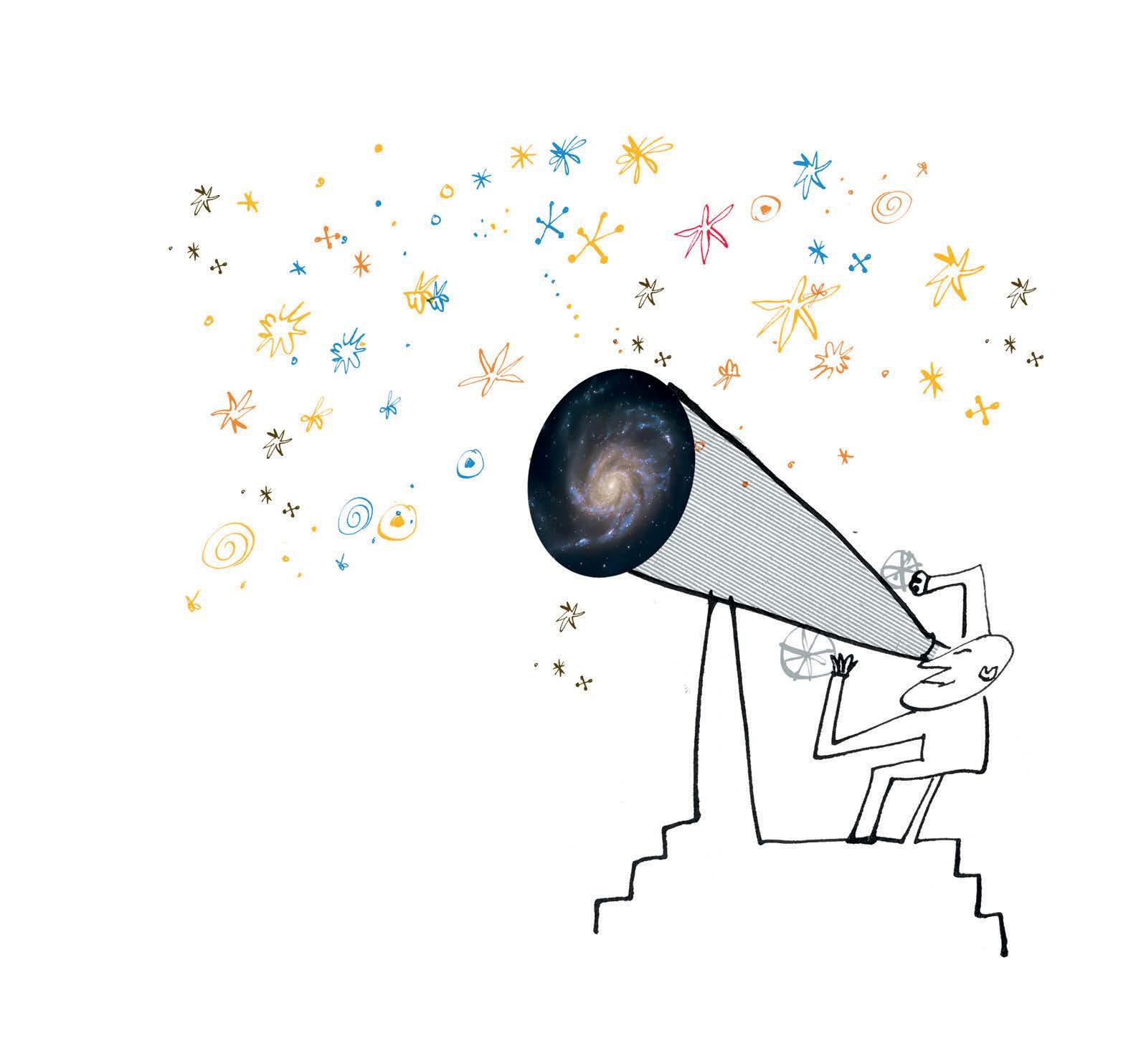13 THINGS Look Up! Facts About Stargazing

Except we can’t see all of them at once because at least half would fall below the horizon. Daylight and haze also limit us. So in fact, the number of stars we can see at night at any given time is around 2,000.
2 The largest star visible with the naked eye is Mu Cephei, a strikingly red star in the constellation Cepheus (the King). If our sun was the size of a softball, Mu, in comparison, would be 437 feet across. The brightest star in the sky is Sirius, or the Dog Star, in the constellation Canis Major. Orbiting it is a white dwarf star known as Pup. Though about the size of Earth, Pupis far denser. On our planet, a teaspoon of its material would weigh 5 tons.
3 The farthest celestial object visible without a telescope is the Andromeda galaxy, 24 quintillion kms away. On a clear night, it appears as a faint elongated patch. When its light began travelling earthward, mastodons and saber-toothed tigers roamed North America. An estimated 1 trillion stars make up Andromeda, more than twice the number in our own Milky Way galaxy.
4 Contrary to popular belief, Galileo did not invent the telescope. The genius behind it was spectacle-maker Hans Lippershey, who applied for the patent in 1608. Telescopes were initially pointed not at the sky, but at the seas—to spy on ships. Galileo first turned a telescope toward the heavens in 1609.
Diese Geschichte stammt aus der October 2024-Ausgabe von Reader's Digest India.
Starten Sie Ihre 7-tägige kostenlose Testversion von Magzter GOLD, um auf Tausende kuratierte Premium-Storys sowie über 9.500 Zeitschriften und Zeitungen zuzugreifen.
Bereits Abonnent ? Anmelden
Diese Geschichte stammt aus der October 2024-Ausgabe von Reader's Digest India.
Starten Sie Ihre 7-tägige kostenlose Testversion von Magzter GOLD, um auf Tausende kuratierte Premium-Storys sowie über 9.500 Zeitschriften und Zeitungen zuzugreifen.
Bereits Abonnent? Anmelden

DELETE YOUR INTERNET FOOTPRINT
With spies lurking everywhere, how can you keep yourself safe? Try these 25 smart steps.

Have You Herd?
A World of GOOD REASONS TO SMILE

POINT TO PONDER
P. V. Sindhu, FORMER BADMINTON WORLD CHAMPION, IN HER SPEECH AT THE 16TH CONVOCATION CEREMONY AT FLAME UNIVERSITY

24,000 FEET AND FALLING
CAUGHT IN A VIOLENT STORM CLOUD, THE PARAGLIDER WAS PUSHED HIGH INTO THE ATMOSPHERE.

Speechless City by Gulammohammed Sheikh, (1975) 122 cm x 122 cm, Oil on Canvas
The painter, poet and critic Gulammohammed Sheikh (born 1937) is one of the leading lights of Indian modern art.

Escape into Exile
A perilous journey, a nation's heartbreak— the Dalai Lama's escape from Tibet unfolds in his own unforgettable words

LAUGHTER THE BEST Medicine
There Is A Special Place

ON THEIR OWN TWO FEET
Lymphatic filariasis, a much misunderstood and widespread tropical disease is finally coming under control thanks to the efforts of past victims of the illness who are spreading awareness in their communities

LISTEN To The Rush
When Toni Marks casts his fishing line out into the moving waters of the remote rivers of New Zealand in search of wild trout, his attention is fixed firmly on the sounds of nature

LIFE'S Like That
My mother-in-law loves to lecture me on the state of my house—as if I don't live with someone that she raised.
